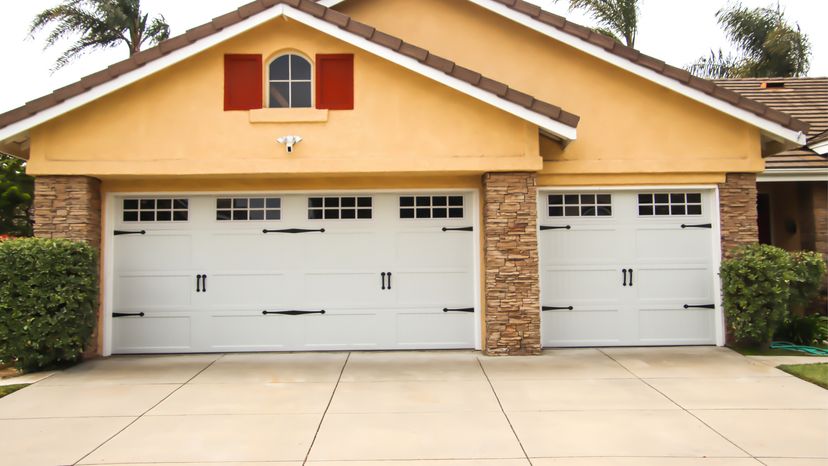
Garage doors can be expensive, but with the right know-how and the right tools, you can build a DIY garage door of your very own.
Advertisement

Garage doors can be expensive, but with the right know-how and the right tools, you can build a DIY garage door of your very own.
Advertisement
The most popular garage door is the roll up sectional garage door. It's typically made of three sections, which are mounted horizontally and hinged together. The door slides with rollers on a track attached to the sides of the door frame [source: DIY Guides]. That's what we're going to build.
Here's what to do:
Advertisement
This is far from the only way to build and install a garage door. The magic of a DIY garage door project lies in the creativity of the builder. So go ahead, use creative materials, cut out a window opening, or even repurpose you old door. The possibilities are truly endless.
Advertisement
Building your own garage door has it's perks. Homeowners can use the money they save to splurge on the electric garage door opener of their dreams. Installing an automatic opener all by yourself isn't recommended, but that's not to say that you can't take the project on.
The first thing you'll want to do is shop around for the ideal opener. There are a lot of options here, including chain drive, belt drive, and direct drive openers. Though each type has it's subtleties, the installation processes follow similar installation steps [source: Home Depot].
Advertisement
Here's what to do:
Remember, the steps above can certainly change depending on the type of door being used, and the type of opener being installed. Automatic openers use a combination of electricity and spring tension, and understanding garage door springs is half the battle.
Fortunately, most of those knowledge gaps are filled by the detailed installation instructions that manufacturers create. Many of them even produce how-to videos to help simplify the process that much more.
Advertisement
More and more home owners are going the unconventional, and more affordable route of installing barn doors (aka carriage doors, or carriage house doors) in place of more traditional options. Unlike conventional overhead doors that require a long list of specialized parts and hardware, barn doors are simpler and much easier to build and install.
Barn doors rely on heavy-duty hinges that help the twin doors swing in and out of the driveway. By opting for barn doors instead of the more traditional option discussed above, you can free up a lot of space inside the garage itself, and pay a fraction of what you might expect to pay for new garage door [source: RealCraft].
Advertisement
Carriage doors are much simpler to DIY, more secure, and require far less long-term maintenance. Homeowners can purchase pre-made steel doors and hang them themselves, construct barn doors from scratch, or hire a professional to tackle the entire project.
Please copy/paste the following text to properly cite this HowStuffWorks.com article:
Advertisement